Helen Clifton was startled awake near midnight by her granddaughter's shouts. "Grannie, wake up, wake up -- something’s happened to the Queen."
Clifton, still half-dreaming, thought first of England's royal family.
"No, not that queen, Grannie. The men are all running. They're going down to the boats."
The Queen of the North, a passenger ferry traveling 441 nautical kilometres from Prince Rupert to Port Hardy, had just ploughed into Gil Island, scraping paint onto rocks and barnacles. Clifton couldn't believe it. Her tiny First Nations fishing village, literally just around the bend, had long regarded the provincial ferries, with their advanced navigational equipment, as something close to invincible. Now fishermen -- or "menfolk" -- from Hartley Bay sped towards the ferry in small speedboats, drenched by pouring rain and chopping waves.
Clifton, one of the village's elders and a local matriarch, waited for news beside the VHF marine radio in her living room. It crackled. The ferry was sinking fast. It would soon be underwater. The entire village seemed to breathe in at once. "You could have heard a pin drop in this community," Clifton recalls to this visiting reporter.
Nearly four and a half years later, many in Hartley Bay fear that night may have portended their future. Calgary-based Enbridge Inc. proposes to pipeline fossil fuels from Alberta's oil sands to coastal Kitimat, and then ship them on supertankers to hungry energy markets in China and beyond.
The proposal -- now under federal review -- has put Hartley Bay's estimated 180 residents at the ground zero of global economic forces.
Nobody disagrees a tanker crash in British Columbia's treacherous northern waters means environmental catastrophe. But for First Nations communities up and down the coast, the stakes are arguably highest. An oil spill could sever their bonds with the natural world, and drive a way of life extinct.
A growing coalition of First Nations, conservation groups and international photographers has vowed to fight Enbridge with everything it's got. Some within are now framing the struggle as the biggest ever in B.C. environmental history.
'Feed us weiners and baloney?'
By the standards of urban North America, Hartley Bay is about as remote as you can get. The Gitga'at village lies approximately 620 kilometres north of Vancouver and 80 southwest of Kitimat, tucked snugly into a cove at the mouth of the Douglas Channel (satellite map here). No highway or backcountry road connects Hartley Bay to the B.C. interior. Most people take a small ferry -- named the Tsimshian Storm -- from Prince Rupert. The journey is about three and a half hours down the narrow Grenville Channel. On either side, rainforested mountains wrapped by wisps of cloud plunge into gray-blue seas. First Nations youth wearing skateboard shoes smoke cigarettes on the ferry's back platform.
Hartley Bay's breakwater, a fortress-like stack of boulders covered in green algae, shelters battered fishing boats and the odd luxury yacht. Single-family homes -- most vinyl-sided -- spread in a rough semi-circle along the shore. They're connected by a matrix of boardwalks that glisten when it rains. Locals rumble across town on ATVs or covered golf carts.
Whether or not they fish, everybody here is connected intimately to the ocean. Many see it as the life-source of a breathing natural world that bestows black cod, clams, seaweed, Coho salmon, oolichan and other gifts upon those attuned to its rhythms.
Wally Bolton, a 60 year-old First Nations fisherman, sets out early each morning in his aluminum speedboat. He runs a ground-line with 70 to 80 baited hooks deep into the water, returning seven or so hours later to reel it in. Bolton estimates his hauls of halibut and red snapper feed about 15 families, including his own. He also describes grocery runs to Prince Rupert and walking the aisles of Overwaitea for meat and tissue paper. Factory-produced items like pop, chips and chocolate bars arrive twice a week by ferry. When people here say they'd starve if a supertanker crashed off the B.C. coast, they're talking about the spiritual existence of a community.
"What's Enbridge going to do if there's an oil spill?" Bolton asks. "Feed us wieners and baloney?"
Different worlds, one pipeline
Hartley Bay's fate now is linked to forces that already have transformed the distant town of Fort McMurray, the frontier city at the centre of Alberta's oil sands boom. Fort McMurray lies 437 kilometres north of Edmonton, carved from an immense Boreal Forest that spans Canada and Eurasia. Here the northern lights sparkle overtop strip malls, fast-food joints and labyrinthian white-vinyl neighbourhoods.
Oil reserves second only to Saudi Arabia's are turning Canada into a petro super-power. The resource is not easy to extract. Vast open-pit mines give way to sprawling toxic lakes and flame-spewing industrial fortresses only a 30 kilometre drive from Fort McMurray. Other operations burn natural gas to pump steam underground, melting a viscous substance known as bitumen out of deep formations. The fossil resource is cooked at high temperatures and diluted with chemicals before it's ready for shipment on pipelines. Critics such as the U.S. Environmental Protection Agency estimate producing and combusting oil sands fuel creates up to 82 per cent more carbon emissions than conventional oil.
It's this energy source that Enbridge hopes to ship past Hartley Bay as early as 2016. Right now, the United States is the resource's only major foreign buyer. By constructing a twin pipeline 1172 kilometres from Bruderheim, Alberta, to the west coast, Enbridge, and the industry behind it, hope to access huge Asian markets. Canada could play one bidder off another. To mandarins in Ottawa and the boardrooms of multinational oil firms, that is an attractive proposition, especially if the U.S. gets serious about climate change policies that might shut down or slow imports from the oil sands.
Enbridge is adamant that supertankers -- double-hulled for extra safety, it stresses -- pose no risk to coastal First Nations communities.
Crews and ships will be assessed by third party agencies, powerful tugboats will guide each shipment and advanced radar systems will protect against any crash, spokesperson Alan Roth told The Tyee. "Enbridge is an extremely responsible company," he said. "They would not be proposing a project unless they felt the safety aspects would be absolutely world standard."
'We've had many, many battles'
Four and a half years ago, listening breathlessly to each crackle from her VHF radio, Helen Clifton received a troubling phone call. Out on the water, Hartley Bay fishermen were now taking Queen of the North passengers in speedboats to the village's cultural centre. Residents had readied coffee, sandwiches and blankets on a moment's notice. But several passenger counts didn't add up right, a local elder told Clifton. The numbers were short. The next day was unlike any other in Hartley Bay's history. Coast guard and RCMP swarmed the town. A helicopter landed in the field outside the school. Police went house to house, asking about two passengers -- "strangers," they said -- who should have been among those in the cultural centre but weren't.
They tacked a big yellow police ribbon across each door they knocked on. "It was just like in a movie," Clifton said.
Hartley Bay held memorial services for Gerald Foisy and Shirley Rosette, both presumed drowned, a year later. Despite exhaustive government consultation, no agreement was ever reached to remove wreckage from the ocean floor. Leaking oil fouled clam beds at Fin Island until just recently. The town fears seawater will one day corrode sunken fuel tanks, polluting its waters further.
Voiced less explicitly is a sense the whole ordeal exposed Hartley Bay to an outside world far beyond its control. Villagers have always felt at Mother Nature's mercy, but to some extent, they've adjusted to her cycles. During the spring, residents migrate to a seaweed and halibut camp at Kiel. And each autumn they visit the Quaal River for salmon.
Gitga'at culture has been battered long and hard by fur traders, churches, loggers, treaties and fisheries, Clifton said. Under Enbridge's proposal, 220 supertankers would pass annually within view of Hartley Bay. A major oil spill could wipe out whatever culture is left. "We've had many, many battles throughout our history, since as inhabitants we were discovered," Clifton said.
"But the sea is food for our soul. We need that."
'Never a fight like this before'
The past three decades in B.C. have seen major environmental battles. In 1993, more than 800 activists were arrested protesting plans to log old-growth forest on Vancouver Island's Clayoquot Sound. Only years later, another campaign, the Elaho Valley's "War in the Woods," was punctuated by violent scraps with loggers and tree-fort blockades. During the decades-long battle to save the Great Bear Rainforest -- in which Hartley Bay lies -- Greenpeace escorted delegates from the German papermaking and magazine publishing industries through pristine wilderness. A land use agreement finalized only last year between First Nations, enviros and loggers was heralded as a landmark model the world could learn from. $60 million in private foundation money is now committed towards it.
Those battles -- and others -- were globally important, said Bruce Hill, a former logger turned conservationist with a long history in the region. But logging firms, he argues, just don't measure up to oil companies in terms of political or economic clout. Enbridge, one of the country's foremost pipeline operators, got $100 million from anonymous oil producers and Asian funders to help its project through federal reviews.
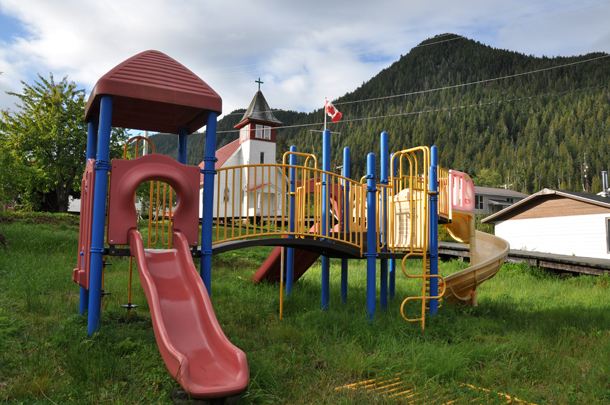
"This is the full weight of Canada as a petro-state," Hill said. "B.C.'s environmental movement has never had a fight like this before."
This March, the Coastal First Nations -- a nine-nation alliance that includes the Gitga'at -- took out a full page ad in The Globe and Mail, declaring no tankers would sail its waters.
Hundreds recently protested in Kitimat and Prince George, where preliminary federal hearings are being held.
These past two weeks, the International League of Conservation Photographers has been traveling the Hartley Bay area. The group, which sponsors some of the world's most renowned visual talent, wants to expose Enbridge's pipeline proposal to a global audience. It's the ILCP's tenth such trip since 2007 to ecosystems threatened by development (others include the Yucatan and B.C.'s Flathead Valley).
"If we don't stand up to Enbridge," said founder and leader Cristina Mittermeier, "we deserve every oil spill we get."
First Nations blockades?
With Hartley Bay getting smaller in the distance, Coastal First Nations director Gerald Amos pilots the Suncrest, a rickety-looking but solid fishing craft, past barnacle-encrusted shorelines and later, the blow-hole mist of a humpback whale. At the stern, long fishing lines trail into the ocean. Amos steers with a classic wooden captain's wheel missing one peg.
To the east opens the mouth of Douglas Channel, shrouded in fog, which, if followed long enough, reaches Kitimat. Then it's a straight push more than 1,000 kilometres through forest and mountain range to Fort McMurray's industrial sprawl. Out west lies the Hecate Strait, separating mainland B.C. from the Queen Charlotte Islands. The waterway, where all foreign-bound supertankers must pass, has recorded waves 30 metres high.
Amos talks boldly about full-on First Nations blockades, should Enbridge's pipeline project get federal approval.
"A lot us have said we're prepared to go to jail," he remarks. One Hartley Bay resident even boasted earlier he'd rather ram his fishing boat into a supertanker than let it pass.
Out on the deck, people begin to shout. A thrashing Coho salmon is reeled on board. Someone bashes its head with a piece of driftwood. It shudders a moment, then turns still in a pool of blood and slime.
"I don't think people get it yet, including some of our own people," Amos said, "what kind of risk we're being asked to take." ![]()
Read more: Environment




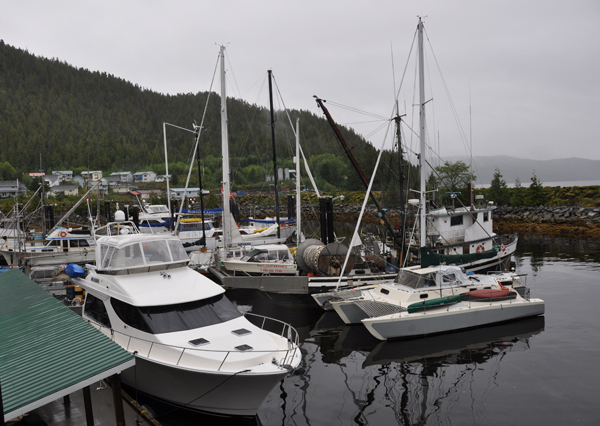


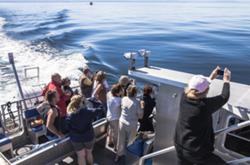
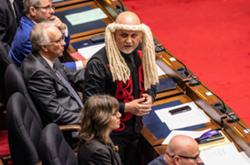
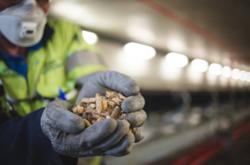
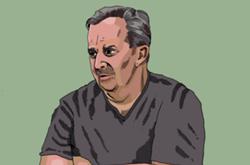
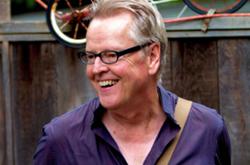

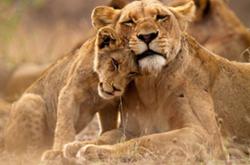



Tyee Commenting Guidelines
Comments that violate guidelines risk being deleted, and violations may result in a temporary or permanent user ban. Maintain the spirit of good conversation to stay in the discussion.
*Please note The Tyee is not a forum for spreading misinformation about COVID-19, denying its existence or minimizing its risk to public health.
Do:
Do not: